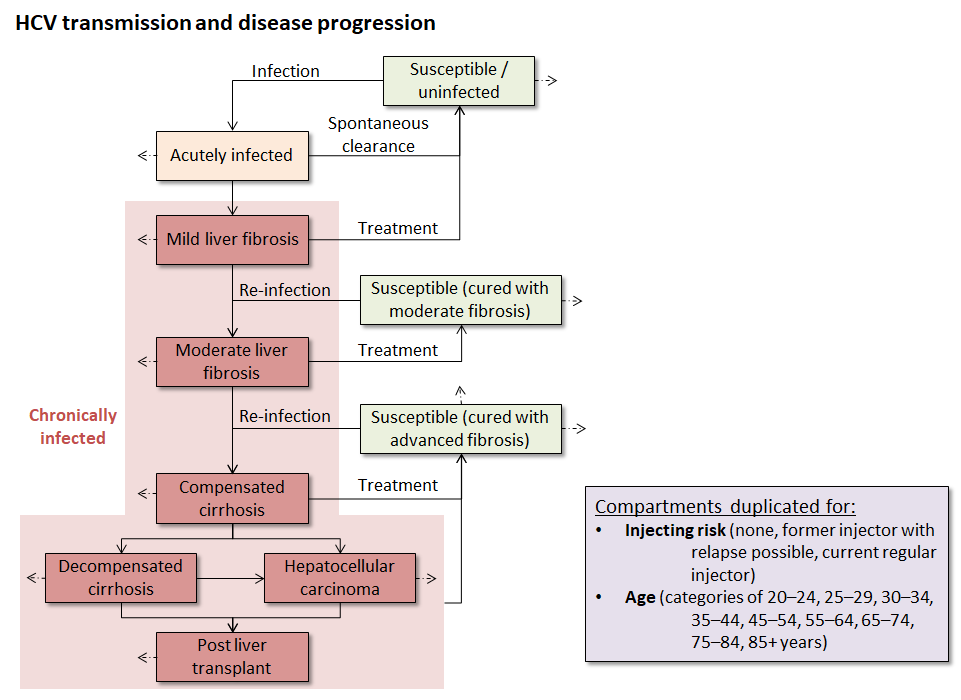Informing target setting, prioritization strategies, resource allocations and developing investment cases for evidence-based strategies to eliminate hepatitis C as a public health threat
Burnet-Optima Hepatitis C virus (HCV) model
To view our peer-reviewed publication that describes the Burnet-Optima HCV model, please click here.
About 70 million individuals worldwide (2-3% of the world’s population) are chronically infected with hepatitis C virus (HCV).
Every year, approximately 499,000 deaths are attributed to HCV infection, mostly caused by liver cirrhosis and hepatocellular carcinoma.
The advent of highly effective direct-acting antiviral therapies for the treatment of HCV means that elimination is now firmly on the agenda, with the World Health Organization recently announcing elimination targets including:
- A 65% reduction in HCV-related deaths by the year 2030; and
- An 80% reduction in HCV incidence by the year 2030.
What types of questions can Burnet-Optima HCV answer?
- How do we determine the most cost-effective scale-up of treatments among priority groups, through different modalities, and over different time-frames?
- How much will it cost to reach our targets?
- How can the cascade of care be optimized to maximize the number of people receiving curative treatment:
- Where are the bottlenecks?
- Which modalities of which programs are required (e.g. mobile clinics or nurse-led models of care)?
- Given the limited resources available, what is the best use of funding across the programs of prevention, testing
and treatment to:
- Minimize morbidity and mortality?
- Minimize new infections?
- Get as close as possible to multiple national targets?


 © Optima Consortium for Decision Science, 2023
© Optima Consortium for Decision Science, 2023